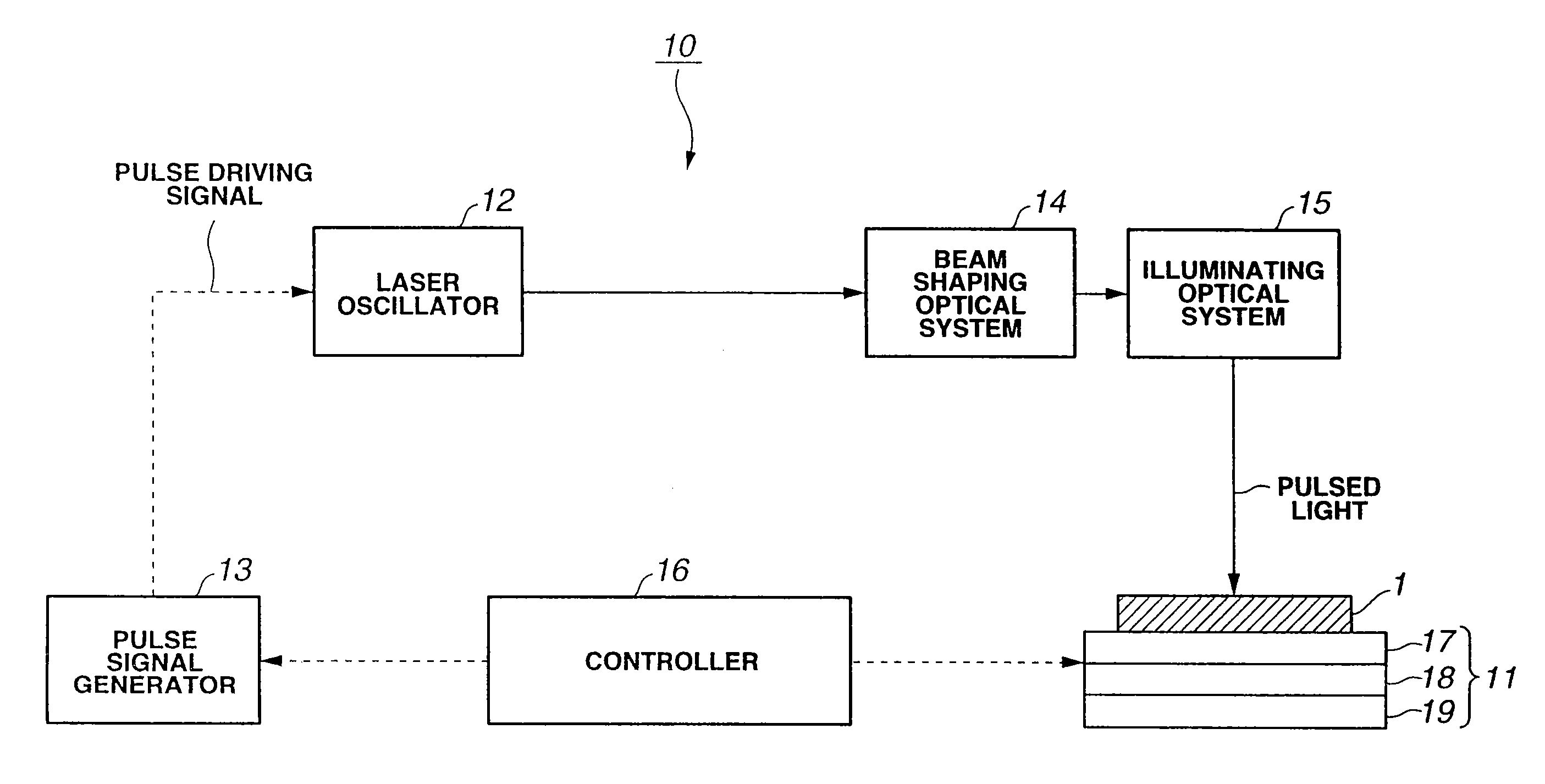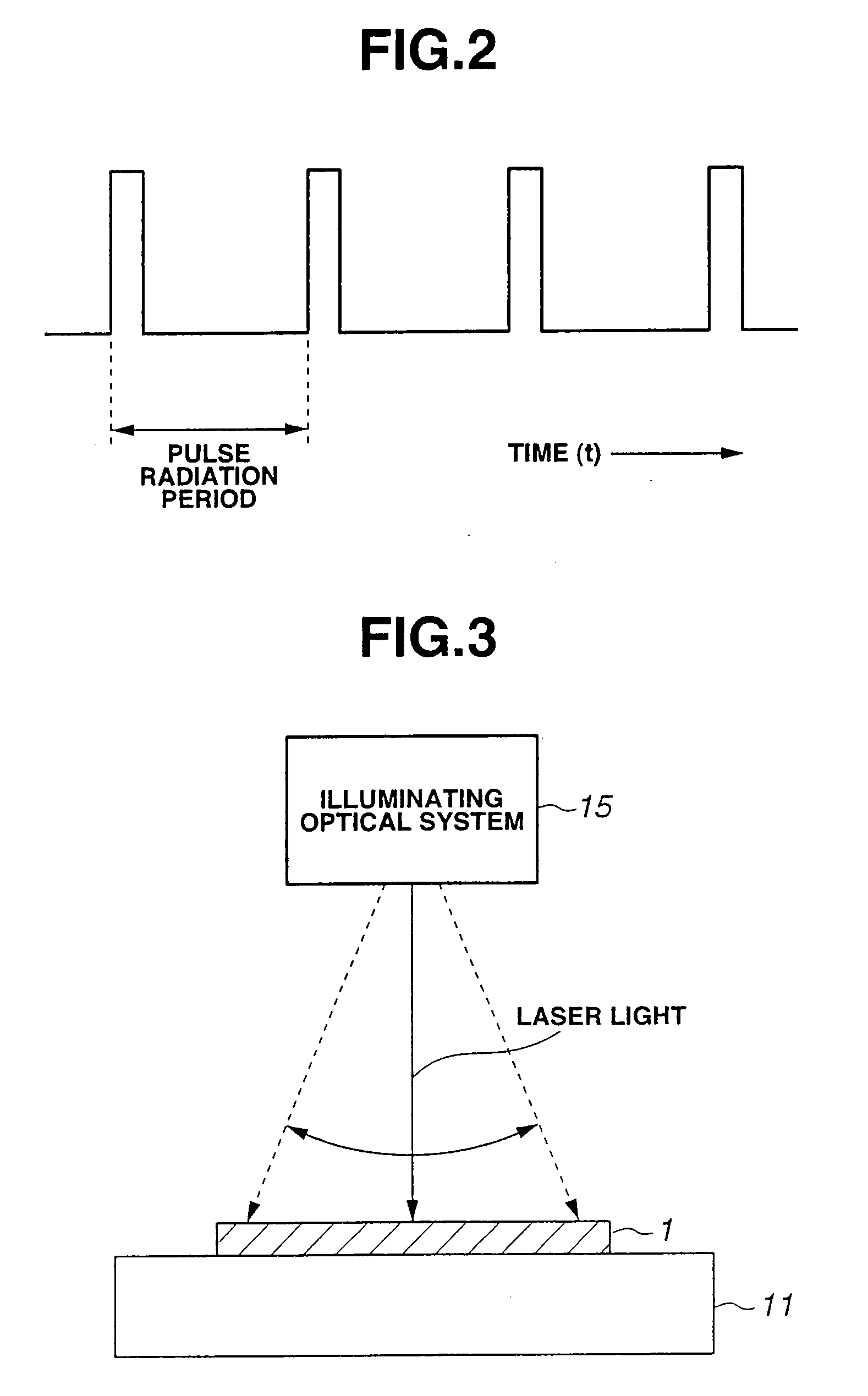Laser annealing device and method for producing thin-film transistor
a technology of laser annealing and thin film, which is applied in the direction of transistors, manufacturing tools, solid-state devices, etc., can solve the problems of lowering the throughput unable to illuminate the laser light at the correct position, and complicated structure of the laser annealing device, so as to achieve the effect of increasing the crystal grain size of the polysilicon film
- Summary
- Abstract
- Description
- Claims
- Application Information
AI Technical Summary
Benefits of technology
Problems solved by technology
Method used
Image
Examples
first embodiment
[0062] As a first embodiment of the present invention, a laser annealing device performing the laser annealing, as the temperature of the insulating substrate has been raised, is now explained.
[0063] Meanwhile, the laser annealing device of the first embodiment is used in e.g., a polycrystallizing step in the manufacturing process for a thin film transistor (TFT) of forming a polysilicon film which is to become a channel layer. That is, the laser annealing device of the first embodiment is used in a step of illuminating the laser light on an amorphous silicon film formed on the glass substrate to effect annealing.
[0064]FIG. 1 shows the structure of a laser annealing device 10 of the first embodiment of the present invention. The laser annealing device 10 includes a movable stage 11, on which to set a TFT substrate 1 to be annealed, a laser oscillator 12 for radiating pulsed laser light, a pulse signal generator 13 for generating pulse driving signals of a predetermined period, a b...
second embodiment
[0104] As a second embodiment of the present invention, a laser annealing device in which plural light pulses are synthesized to generate a synthesized pulsed laser light with an elongated pulse width and in which the resulting synthesized light is illuminated on a substance, is now explained.
[0105] Meanwhile, the present second embodiment of the laser annealing device is used in a polycrystallization step of forming a polysilicon film as a channel layer in the manufacturing process for a thin film transistor (TFT). That is, the present second embodiment of the laser annealing device is used in a step of illuminating the laser light on the amorphous silicon film formed on a glass substrate to effect annealing.
[0106] In the following explanation of the second embodiment of the laser annealing device, the component parts which are the same as those of the first embodiment of the laser annealing device are depicted by the same reference numerals and the detailed description therefor ...
third embodiment
[0137] As a third embodiment of the present invention, such a laser annealing device in which it is possible to control the position of generation of crystal nuclei of a polysilicon film is hereinafter explained.
[0138] It should be noted that the laser annealing device of the third embodiment is used in a polycrystallization process for forming the polysilicon film, as a channel layer, in the manufacturing process for a thin film transistor (TFT). That is, the laser annealing device of the third embodiment is used in a step of illuminating the laser light on the amorphous silicon film formed on the glass substrate.
[0139] In the following explanation of the laser annealing device of the third embodiment, the same reference numerals as those used in the explanation of the laser annealing device 10 of the first embodiment are used, and the detailed description thereof is omitted for simplicity.
[0140]FIG. 16 shows the structure of a laser annealing device 30 according to the third em...
PUM
| Property | Measurement | Unit |
|---|---|---|
| wavelength | aaaaa | aaaaa |
| wavelength | aaaaa | aaaaa |
| transmittance | aaaaa | aaaaa |
Abstract
Description
Claims
Application Information
 Login to View More
Login to View More - R&D
- Intellectual Property
- Life Sciences
- Materials
- Tech Scout
- Unparalleled Data Quality
- Higher Quality Content
- 60% Fewer Hallucinations
Browse by: Latest US Patents, China's latest patents, Technical Efficacy Thesaurus, Application Domain, Technology Topic, Popular Technical Reports.
© 2025 PatSnap. All rights reserved.Legal|Privacy policy|Modern Slavery Act Transparency Statement|Sitemap|About US| Contact US: help@patsnap.com



